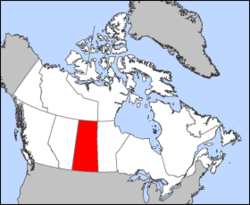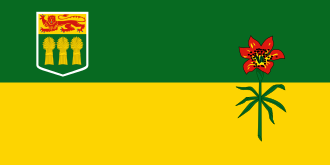
The following outline is provided as an overview of and topical guide to Saskatchewan:
Contents
- General reference
- Geography of Saskatchewan
- Environment of Saskatchewan
- Regions of Saskatchewan
- Demography of Saskatchewan
- Government and politics of Saskatchewan
- Representation in the government of Canada
- Branches of the government of Saskatchewan
- Interprovincial relations
- Law of Saskatchewan
- History of Saskatchewan
- By period
- By region
- By subject
- Culture of Saskatchewan
- The Arts in Saskatchewan
- Sports in Saskatchewan
- Economy and infrastructure of Saskatchewan
- Education in Saskatchewan
- See also
- References
- External links
Saskatchewan – central prairie province in Canada, with an area of 588,276 square kilometres (227,100 sq mi), bounded on the west by Alberta, on the north by the Northwest Territories, on the east by Manitoba, and on the south by the U.S. states of Montana and North Dakota. Saskatchewan was first explored by Europeans in 1690 and settled in 1774; prior to that, it was populated by several indigenous tribes. It became a province in 1905. Saskatchewan's major industries are agriculture, mining, and energy. The province's name is derived from the Saskatchewan River. The river is designated kisiskāciwani-sīpiy ("swift flowing river") in the Cree language. [1]



